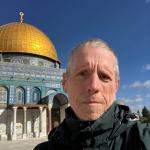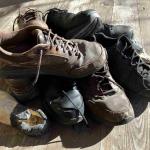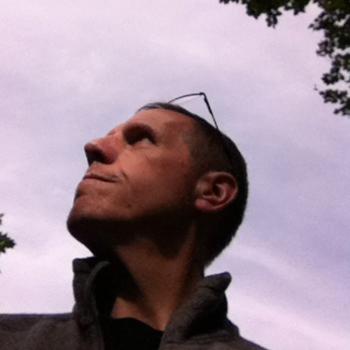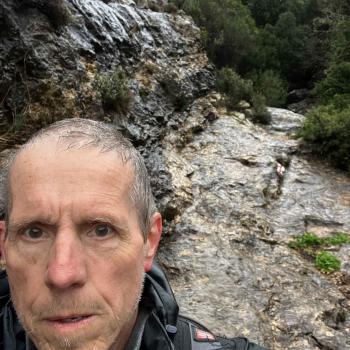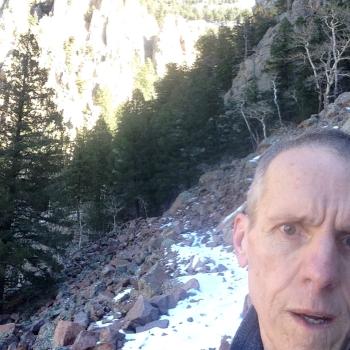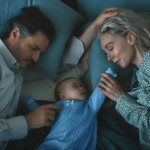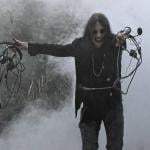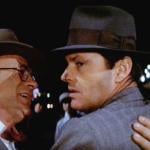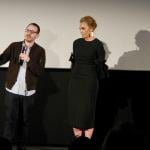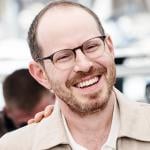I wake up from my drugged and jetlagged sleep and actually do think, “Where Was I?” Oh yeah, he thinks, coming to life. This groggy pilgrim is in Tel Aviv.
Those who live the Pilgrim Life are often unsure where they are. Anyone remember the goofy movie, “It’s Tuesday It Must Be Belgium.” a sendup of whirlwind tours of Europe? For a few seconds that is how I feel. And that’s good, by the way.
Who really knows where they are, after all? In this swirling universe where time and space are one and the same, where and when you are is changing by the moment. Those who think they are in the same place are the groggy ones, technically. Ok then, next question: “What Am I Doing Here?”
Well, exploring Israel, which (for a clergyman) is a natural choice. But the next thing that comes to mind is, “American Airlines lost my bag.”
Forget holiness. What about my underwear?
This is not the first time I landed on sacred soil without my luggage. The last time was in India in January of 2016. And then I was without clothing for a week. Yeah, I always pack spare socks and drawers in my carry on, but I am hiking in several days through the Galileean countryside. I will definitely need more clothes and whether they get to me in time is definitely uncertain.
Pilgrims improvise!
With that thought, I rose and prepared for the day, which you will hear about. But first, some pracical matters from an expert. When traveling overseas, choose hotels with a breakfast
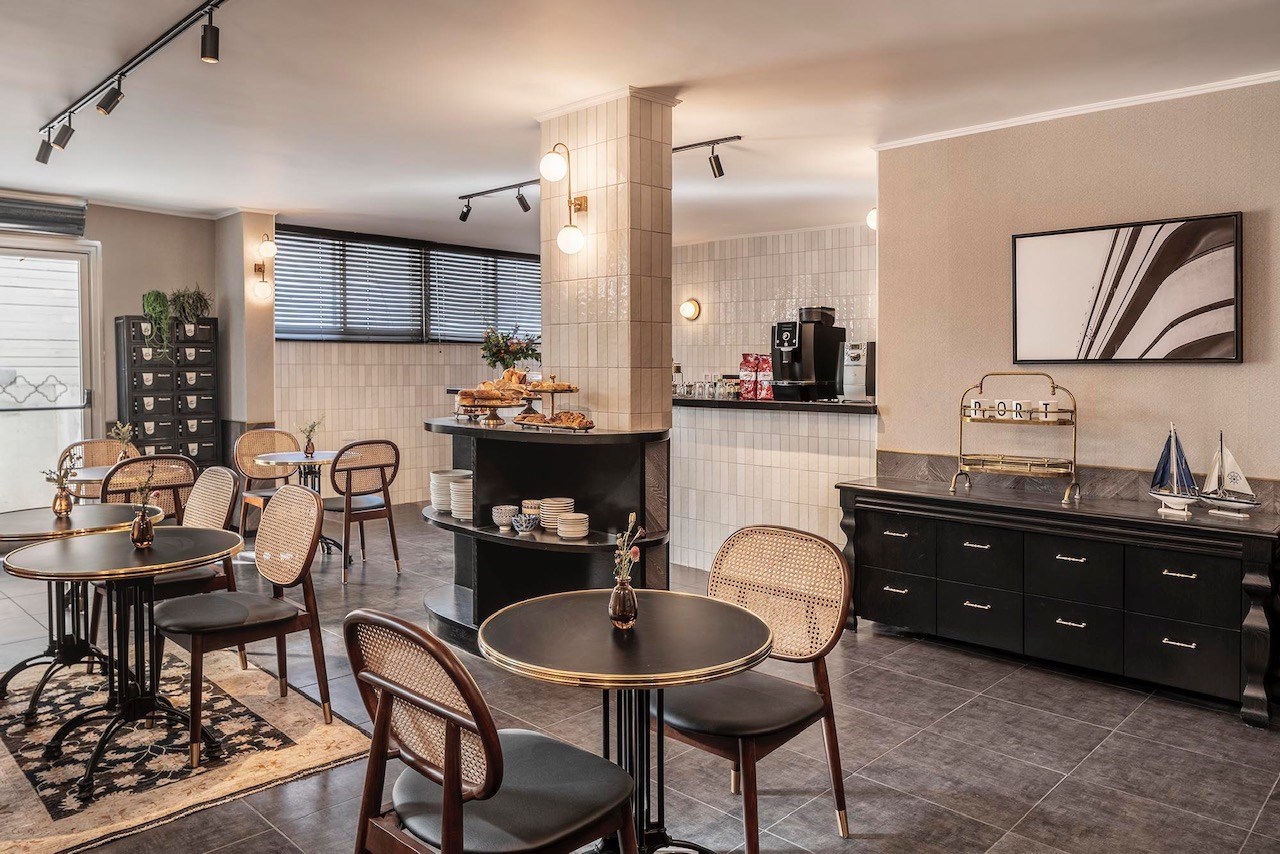 Why? Because you can stoke up safely, and even snatch something for a snack or walking lunch. Not that Tel Aviv is dicey in terms of food safety, but when I was in India and Turkey and Peru, uncooked food and drink was a little risky. Hotels are scrupulous, and several friends told me of their experiences with new pathogens, and I did not spend thousands of dollars to be sick halfway around the world.
Why? Because you can stoke up safely, and even snatch something for a snack or walking lunch. Not that Tel Aviv is dicey in terms of food safety, but when I was in India and Turkey and Peru, uncooked food and drink was a little risky. Hotels are scrupulous, and several friends told me of their experiences with new pathogens, and I did not spend thousands of dollars to be sick halfway around the world.
Thus I got into the habit of eating robustly in the morning, and packing a snack . So far I have not succumbed. And let me tell you that even modest hotels that cater to foreign visitors have good breakfasts. I have enjoyed paratha and chana masala in Delhi, flatbread and Menemen in Istanbul, Picarones and Humitas in Peru. Here in Tel Aviv breakfast was whole grain bread, salad, yogurt, three cups of coffee because they were small and had milk, and two slices of very good and very rich Babka.
Thinking about how to deal with my clothing dilemma occupied my thoughts all through breakfast, though. No matter which way I turned it, it was best to buy a pair of pants, a shirt, some socks and a drawers. I researched hiking clothes and found a well reviewed place. But I want to do more, being Tel Aviv but briefly. Yes, there are excellent museums, but I wanted to see the city itself and thus decided to walk down to Old Jaffa, sometimes called Joppa, the port that has been here back to ancient times. Then I would walk to the clothing store, then come back to the hotel. And I succeeded. Let me tell you about it.
I will start with the last image: A man in shorts on an electric scooter, wearing a pink helmet, holding the scooter with one hand, a cat in the other, which hand also held a leash tethering a dog that trotted along beside.
I was so distracted that on my next step I slipped on a large red onion that had fallen from someone’s grocery bag.
Welcome to Tel Aviv!
This city somehow is LA and Miami, with a strong dash of Athens thrown in. And the reason I know this is because I walked all over the place.
Walking is the only way to see a place
Buses are easier, subways/metros are faster, but you can only truly see a place on foot, which is to say, at resident level. Walking has only two disadvantages: fatigue and perspiration (both of which were in abundance when I got back to my room that afternoon). In every other way walking is preferable. There is no better way to sense a than how residents experience it, and at a pace and position that brings every detail up close and personal.
I start by following Google’s suggested path to Jaffa at around 930. My hotel in the north and called the Port Hotel because the actual port is up here. Not far south, though, the shore becomes becomes a city beach, and I cannot resist walking a path near the beach very similar to Los Angeles and Lima, full of other walkers and cyclists. The sun is bright and my fleece feels too warm very soon. I forgot my hat, which bothers me because I have had skin cancer and really do not want any more.
There must be a word or phrase that captures the combination of squalid decay and restless creation at the same time.
 Buildings are being built and repaired all over, and plenty have stucco that has begun crumble like romantic villas in Italy. Mid century modern it everywhere, as most of the city is post 1948. But occasionally there are older stone buildings with arched windows like churches usually of two stories where the street level is retail. As in other European cities I have walked, businesses cluster like with like. By the end of the day I went through an area of art dealers and framers, household goods, fashion. Corner stores, bodegas we call them in NYC, are common especially in less chic areas.
Buildings are being built and repaired all over, and plenty have stucco that has begun crumble like romantic villas in Italy. Mid century modern it everywhere, as most of the city is post 1948. But occasionally there are older stone buildings with arched windows like churches usually of two stories where the street level is retail. As in other European cities I have walked, businesses cluster like with like. By the end of the day I went through an area of art dealers and framers, household goods, fashion. Corner stores, bodegas we call them in NYC, are common especially in less chic areas.
The walk along the seafront could have been Venice CA without the tawdry shops. I saw surfers and recreational sailing boats beyond the jetties. Beach volleyball was going on. I stopped to take photos of some quirky buildings and the rermarkably blue Mediterraean. There were a few surf fishers with poles their wedged into the rocks.
Old Jaffa – or Joppa – has biblical connections.
Jonah is said to have boarded the ill fated ship here, and there is a church dedicated to St. Peter who was said to have his dream of the many animals while here. What the dream meant is still up for grabs, but that’s what dreams and images do, you know, they have multiple meanings. But it is also medieval and Islamic and British. One house with a great green door had a plaque above that told it was the place of what would become Bank Leumi, but then (meaning 1902) was the Jewish Colonial Agency with the grand plan to buy all the land in Palestine and settle Jews in it. This was Zionism’s first toe hold.
 Going around a corner and up a hill I find myself climbing onto a well arranged modern plaza that connects the remaining old buildings and the church. There is an achroological museum under the plaza which is closed (of course), and in the backstreets a monastery or two clustered near the church though not noticeable themselves being cheek by jowl with other buildings. There are the expected tourist shops, and a lovely hilltop garden. Little remains of its oldest parts, at least visibly. I did snap a shot of some mostly buried stone arches than portend an old structure beneath the current ones. Nor can you tell that it has been occupied by no less than sixteen regimes dating back to ancient Egypt.
Going around a corner and up a hill I find myself climbing onto a well arranged modern plaza that connects the remaining old buildings and the church. There is an achroological museum under the plaza which is closed (of course), and in the backstreets a monastery or two clustered near the church though not noticeable themselves being cheek by jowl with other buildings. There are the expected tourist shops, and a lovely hilltop garden. Little remains of its oldest parts, at least visibly. I did snap a shot of some mostly buried stone arches than portend an old structure beneath the current ones. Nor can you tell that it has been occupied by no less than sixteen regimes dating back to ancient Egypt. 
I lingered there for an hour, until tourist groups began to appear. I heard Hebrew and Portuguese and African French all at the same time. In the garden a group of Israeli high schoolers were listening desultorily to a teacher.
It was time to move on.
Going down some steps, I paused to take a picture for a middle aged couple when I offered. She smiled and handed me the camera. Done. Down the hill leading away from the old center, there was the remains of an Ottoman Hammam, bethhouse, which was now essentially a very becoming pergola for the surrounding trees.
At the bottom there was a cafe catering to Russian tourists judging by the writing (though it could also be Ukrainian or some other slavic language) which was across the street from a fine old mosque which was closed but had lovely domes and stood near an old well.
At the light I crossed the street. That is when I saw all the shops and streets and other ordinary things of Tel Aviv, including bird crowded power lines, the unmistakable symbol of urban life.

Leaving behind the tourist area, its border marked by splashy shops with souvenirs, I was soon in walking through streets with young mothers pushing strollers, bicycle couriers, old portly men turning little beads in their hands, all the whole making out bits and pieces of Hebrew writing where there was no English. I learned the etiquette of walking. Most folk jaywalk but not boldly like New York. And one side of the street may have a walk sign and the other not. Motorcycles are abundant and fast.
By now the sun was high, the temperature warm, my fleece was off, and I had neither hat nor sunscreen (thank you American Airlines). Thus I stayed on the shady side of the street as much as possible. Buildings were often wedged together into spaces where one was torn down and another built for that shape lot. Some were under repair and some un-helped decay. My nose has lost much of its accuity, but even so there was little smell of diesel that usually comes with older cities. And while there was flotsam about, it was tiny compared to New York or Rome.
I found my clothing store, purchased a pair of hiking pants, a shirt, a pair of socks and drawers, and now $150 poorer started my walk home. This took me through rather better fed neighborhoods, with retail shops and city version supermarkets. No street vendors, which in hindsight surprises me. Is there a law that prevents them? Aside from many sidewalk cafes and restaurants there was no merchandise in the streets. Such is what you notice when walking.
Again and again, places I have been before came to mind when a configuration of buildings and people and trees came before me
I saw the UWS in New York, the Via Veneto in Rome, Miraflores in Lima. Much as almost all music uses the same twelve notes, they somehow manage to be unique as well. Magnolia trees looks the same here as in San Francisco. Bougainvillea here could be in Phoenix. The pigeons on the wires above must have cousins in Istanbul.
Then that fellow on the scooter whips by, cat and dog in one hand, moving so quickly I cannot snag a photo. I cross the street, slipping on a red onion that fell from someone’s bag or cart. How New York! And in the broad median of an avenue I must cross, sleeps a man on the sidewalk with a box beside him and a single shekel coin in it. First homeless person I have seen today. Back in Grand Rapids I could see a dozen before noon. I drop a dollar in the box, because my friend Stuart from Congregational Ahavas Israel gave me a few dollars for my trip. “It’s for luck. Give them to someone who needs them, and you will be sure to come back safely.” What a great superstition!

